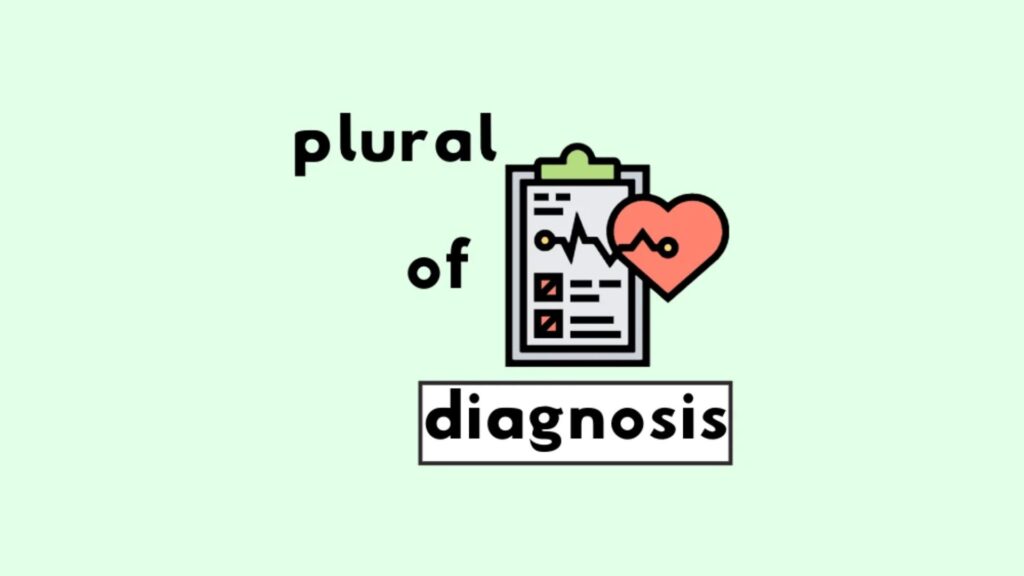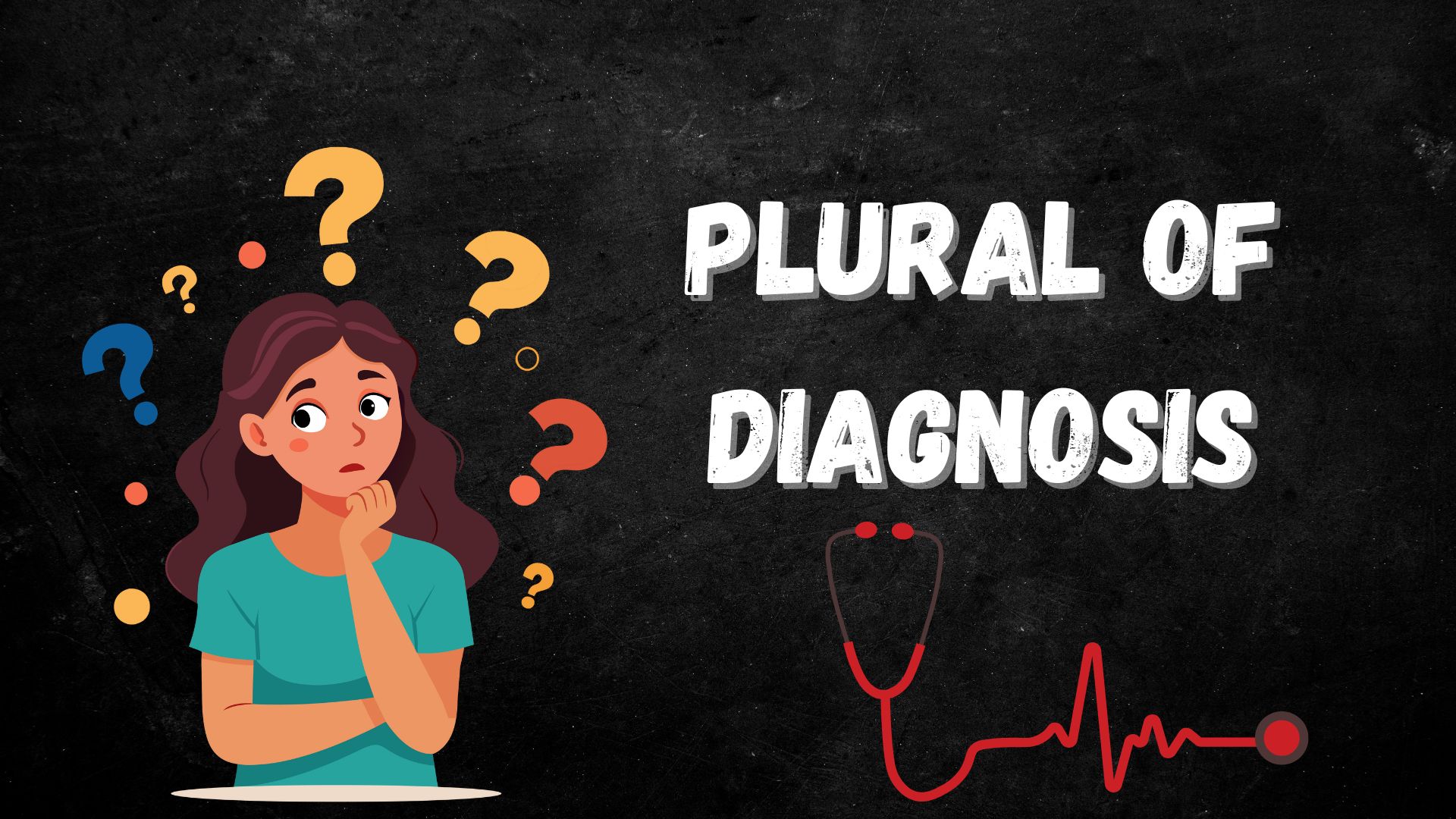If you’ve ever stumbled over the plural of “diagnosis,” you’re not alone. This medical term, though commonly used, doesn’t follow the typical English pluralization pattern. So, what’s the plural form of diagnosis? The answer is: diagnoses.
Understanding this plural isn’t just about grammar it’s about clarity in communication, especially in the fields of medicine, science, and education. Let’s break it down, explore the roots, clarify usage, and see it in action.
The Grammar Behind It: Singular vs. Plural

The word “diagnosis” is derived from Greek. Like many Greek nouns that end in -sis, the plural form changes the suffix to -ses. That’s how we get:
- Diagnosis → Diagnoses
Other examples from the same pattern include:
| Singular | Plural |
|---|---|
| Crisis | Crises |
| Thesis | Theses |
| Analysis | Analyses |
| Diagnosis | Diagnoses |
| Synopsis | Synopses |
These are part of a common Greek-origin English word group. They don’t pluralize by just adding an “s” like regular nouns. Understanding this irregular noun pattern is critical for using medical terminology correctly.
What Does Diagnosis Mean?

A diagnosis is a medical judgment or assessment about the nature of a condition, illness, or issue after examination. It’s the outcome of evaluating disease symptoms, test results, and observations.
Example:
Dr. Petitt delivered a diagnosis of type II diabetes after reviewing the patient’s lab work.
In plural, “diagnoses” refers to multiple determinations:
Example:
The medical team reviewed all previous diagnoses before recommending surgery.
Email Scenario: Using Diagnosis in Business or Medical Writing
Subject: Update on Patient Evaluations Before Christmas Eve
Hi Dr. Breuning,
I wanted to share a summary of the diagnoses made during this week’s clinical reviews. Two patients presented with Alzheimer’s symptoms, while three others were given differential diagnoses involving early-onset dementia versus vitamin B12 deficiency.
We should meet before Christmas Eve to finalize treatment planning.
Regards,
Sandra Monroe
Clinical Coordinator
This example clearly shows how the plural form of diagnosis is essential in real-world communication. Misusing it could cause confusion, especially in high-stakes contexts like healthcare.
Types of Diagnoses
Different types of diagnostic terms exist, and each plays a role in patient care:
- Clinical diagnosis: Based on symptoms and physical examination
- Laboratory diagnosis: Based on lab test results
- Radiological diagnosis: Based on imaging like X-rays or MRIs
- Differential diagnosis: A list of possible conditions
Each of these falls under the broader category of disease identification, making the correct plural usage even more important when documenting multiple findings.
Common Grammar Mistakes: Diagnosis vs Diagnoses
Let’s clear up one frequent error:
- Incorrect: The doctor gave multiple diagnosis.
- Correct: The doctor gave multiple diagnoses.
This mistake happens because diagnosis ends in an “s,” which tricks people into thinking it might already be plural. But it isn’t.
Tip: If you’re ever unsure, try replacing it with a known irregular like analysis. If you wouldn’t say “two analysis,” then you shouldn’t say “two diagnosis.”
Real-Life Usage Example: Patient Report
Patient Name: Thomas Green
Date: January 4, 2025
After comprehensive evaluation, the patient was found to have three separate diagnoses:
- Chronic sinusitis
- Seasonal affective disorder
- Greenstick fractures (left radius)
This kind of medical examination outcome requires precise language. Using the correct plural keeps things professional and accurate.
Medical Error and Misdiagnosis
When talking about mistakes in patient care, the distinction between singular and plural becomes even more important:
Due to incomplete lab reports, two of the previous diagnoses were incorrect.
Here, the plural emphasizes that multiple findings were involved in the misdiagnosis event.
Why Does This Matter?

Language learners, medical students, and even seasoned professionals benefit from understanding these pluralization rules in English. It’s not just about grammar; it’s about accurate communication in patient care.
And for those interested in Greek word origins in English, “diagnosis” provides a fascinating example of how classical languages continue to shape modern usage.
Quick Grammar Rules Recap
- Words ending in -sis (from Greek) change to -ses in plural.
- Always match subject-verb agreement: “The diagnosis is…” vs. “The diagnoses are…”
- Use the plural when referencing more than one judgment or finding.
Helpful Language Study Tip
If you’re struggling with noun transformation rules, create a flashcard list of common Greek-derived words. Practice writing example sentences like:
“The analyses revealed different patterns.”
“Her theses were well-researched.”
“Several diagnoses were ruled out.”
Studying these terms together can boost your grammar and expand your medical terminology list.
Final Thoughts
Whether you’re working in healthcare, studying English, or just want to avoid common grammar mistakes, understanding the plural of diagnosis is vital. Remember:
- Diagnosis is singular.
- Diagnoses is plural.
So the next time you’re documenting a treatment evaluation or writing up a case report, double-check your usage. Clarity counts, especially when it comes to health.

